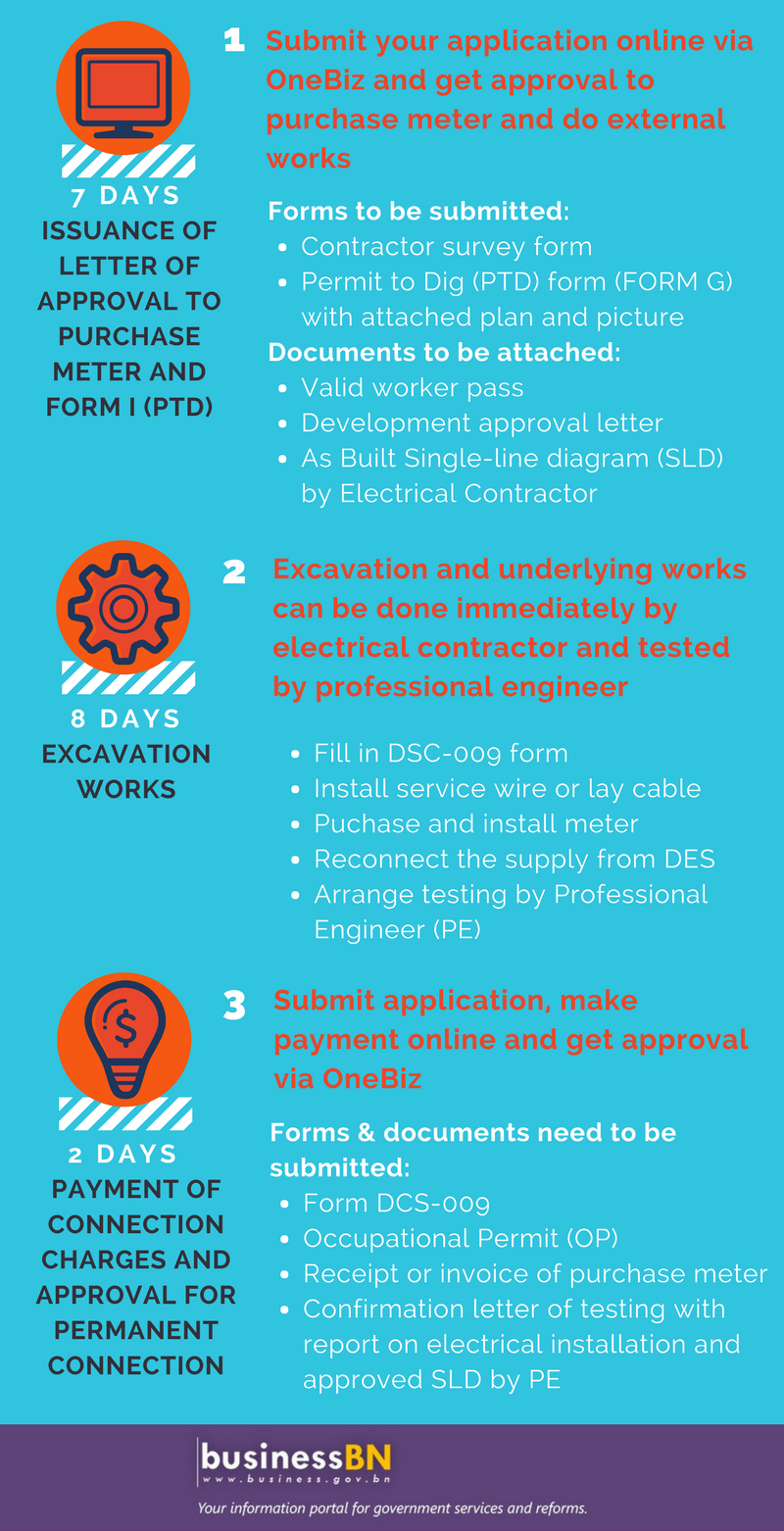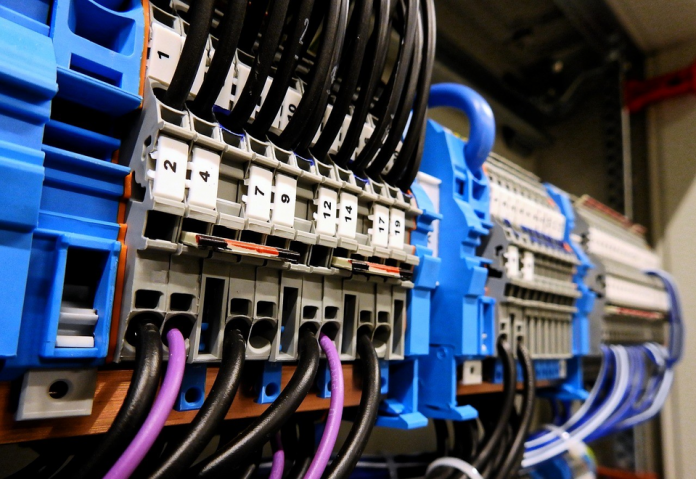The Department of Electrical Services (DES) is targeting a reduction in the time taken for buildings and homes to obtain an electrical connection from 36 to 17 days by streamlining the online application process, reducing select procedures and tightening the timeframe on external works.
DES recently said in a briefing to architects, contractors and professional engineers that initiating and finalising an application for electricity can now be done online through the OneBiz portal. The requirement for a professional engineer to approve the single-line diagram, which maps out the power distribution system, has been removed, along with the need for a site survey.
DES engineer Hj Khairul Hasni Hj Mohd Hasan (pictured below) said the electrical contractor’s single-line diagram would suffice, along with an external electrical layout with Google Maps and photos of the where they plan to access the grid, also known as the tapping point.
A timeframe on external works has also been implemented, with excavation and underlying works targeted within eight days. Collectively, these are aimed at shortening the time taken by more than half, as DES and the government look to improve efficiency and the ease of doing business.

So what does the new procedure look like?
First, an approved or registered electrical contractor on behalf of the client submits an application for the approval for the electrical layout via the OneBiz online system.
They are required to submit a completed contractor survey form and permit to dig application with all the necessary plans and pictures, a valid worker pass, development approval letter and an “As-Built Single Line Diagram” by the electrical contractor.
Once these have been submitted, the Authority for Building Control and Construction Industry (ABCi) will issue a letter of approval to purchase a meter and a Permit to Dig (PTD) which can be downloaded by the applicants. This step should take within seven calendar days on average.
Once applicants have received both approvals via OneBiz, excavation and underlying works can begin immediately. The installation of the meter and internal wiring installation testing by a professional engineer can be done at the same time during the second procedure. DES said contractors would be monitored to ensure that works take no more than eight calendar days, barring any extenuating circumstances.
To ensure a smooth process, contractors need to ensure that their clients have made payment before they start the excavation work.
Contractors that fail to comply with the aforementioned time standard without any extenuating circumstance risk losing their registered licence or work pass.
Once work has been completed, contractors need to submit the Form DCS-009, Occupation Permit (OP), receipt or invoice for the purchase of the meter as well as a confirmation letter of testing along with a report on the electrical installation and the single-line diagram that has been approved by a PE. DES will then issue an electronic bill via OneBiz.
Payment for the connection charges can be made immediately online through the OneBiz or by in person at the 1st floor of the D&T Building in Anggerek Desa.
Once payment is cleared and all the necessary documentation has been submitted and checked, successful applicants will receive the approval for a permanent electricity supply via the OneBiz system.
Where does this fall in the process of dealing with construction permits?
The electrical contractor can initiate the process to apply for electricity two weeks prior to requesting of inspection date by the architect, while the final step of making payment and getting the approval for a permanent electricity supply can only be initiated once the OP has been issued.

Information for this story is courtesy of the Department of Electrical Services. For more information on business-related process visit www.business.gov.bn.












